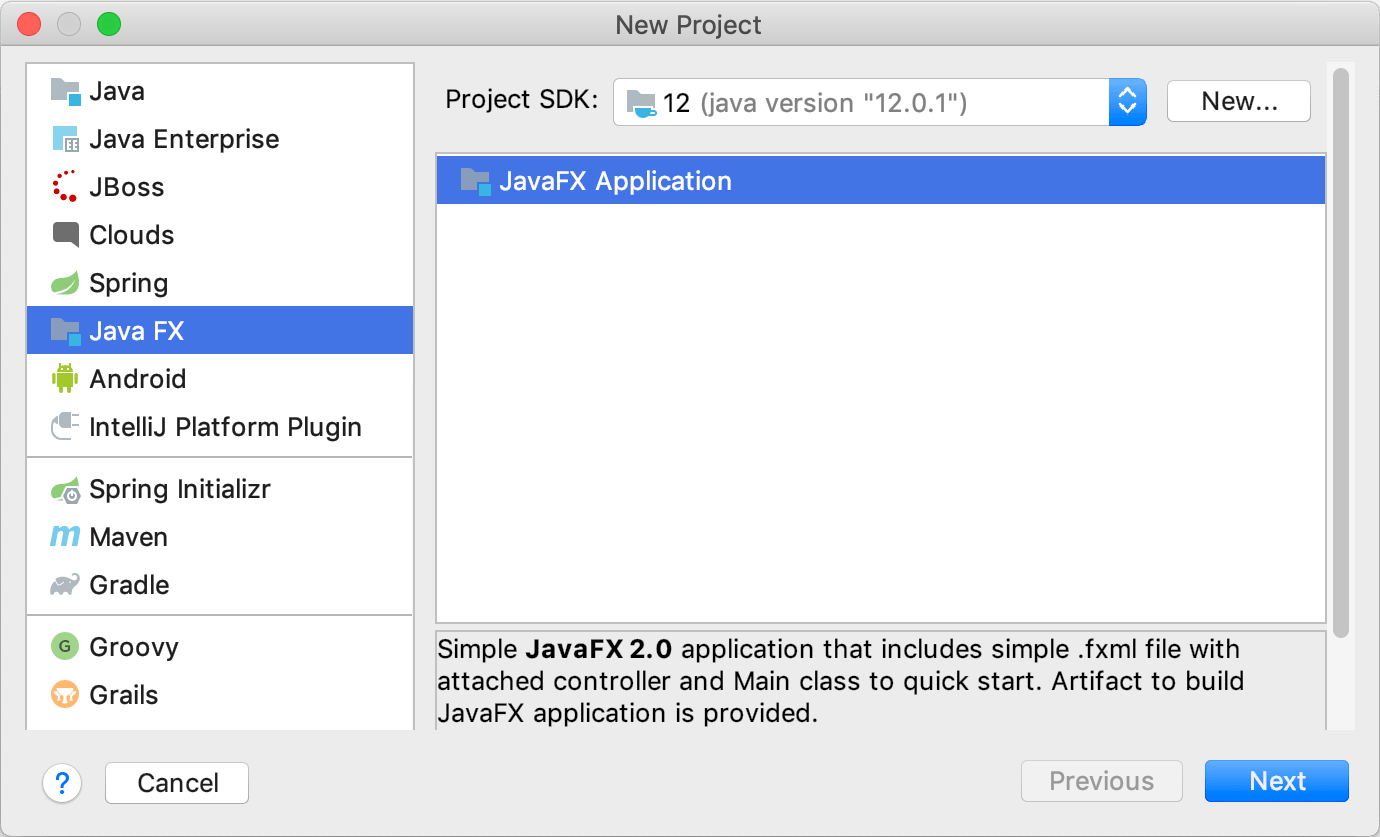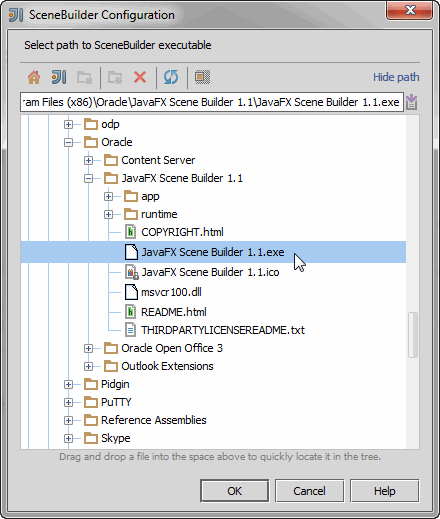

don't select the lib folder or the zip files or other files in that folder.

Users/jasmith/Documents/java/java-sdk-11.0.2/lib).
#Javafx intellij install#
Let's start with the first one: Standard Install module-path PATHTOFX ntrols,javafx.fxml. First as a standard installation and, second, as a "Maven" online install. So, I turned to YouTube and found two ways. I tried following the text-based instructions by JetBrains and it didn't work.
#Javafx intellij how to#
but I can't figure out how to make the text-based tutorial work for me. Now I needed to tell IntelliJ where I placed it on my home computer. So I downloaded JavaFX 11 and placed it in my Documents folder. Go to File -> Project Structure -> Project. While version 14 of JavaFX is available (June 2020), I installed version 11 of the JavaFX toolkit (SDK) and I'm running version 14 of Java. 2 Answers 2 Create a JavaFX project Provide a name to the project, like HelloFX, and a location. So, I've now downloaded, saved and decompressed the JavaFX toolkit.

#Javafx intellij download#
and just download and locate the darn thing from. Wait while IntelliJ IDEA is creating the project. I don't understand the difference between something being "bundled" and "installed". Then click Next Button and put a project name and specify project location whatever you want to save it. fxml file in the Project tool window and select Open In SceneBuilder from the context menu.But the JavaFX library is not actually installed.

If you are using Scene Builder of the version 1.x, the Scene Builder tab is empty. and later, the files will be opened in Scene Builder on the Scene Builder tab by default. If you are using Scene Builder of the version 2.x. fxml file in the editor, there are two tabs underneath the editing area: the Text tab is for developing the markup, and the Scene Builder tab is for editing the file in Scene Builder. fxml files in Scene Builder right in the editor. fxml files.Ĭlick Download Scene Builder Kit in the notification to download and install the tool.Īfter that you can open. In JavaFX, GUI is developed by editing the fxml file, but the image is that Scene Builder will rewrite the contents of the fxml in. If it is not in Japanese, the menu name will be different, but you can find it by opening Preferences and searching for 'JavaFX'. If your project doesn't have JavaFX Scene Builder, you will see a notification on the Scene Builder tab for. All you have to do is install Scene Builder separately and set the path in IntelliJ. In the dialog that opens, select the Scene Builder application (executable file) on your computer and click OK. In the Settings/Preferences dialog ( Ctrl+Alt+S), select Languages & Frameworks | JavaFX. Maven is an automation tool it handles all. The simplest way is setting up JavaFX using Maven. Configure Scene Builder in settingsĭownload and install the latest version of Scene Builder. Step 1 Visit and scroll to the bottom of the page to the getting stared section. Click on the File menu and select Project Structure. fxml files in JavaFX Scene Builder right from the IDE after you specify the path to the Scene Builder application in the settings. If you want to create a JavaFX application in an IntelliJ project, you will need to add the JavafX library.


 0 kommentar(er)
0 kommentar(er)
